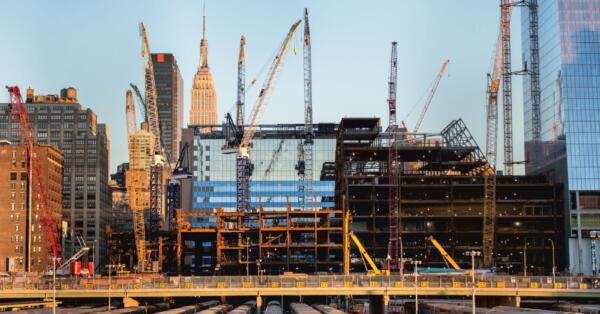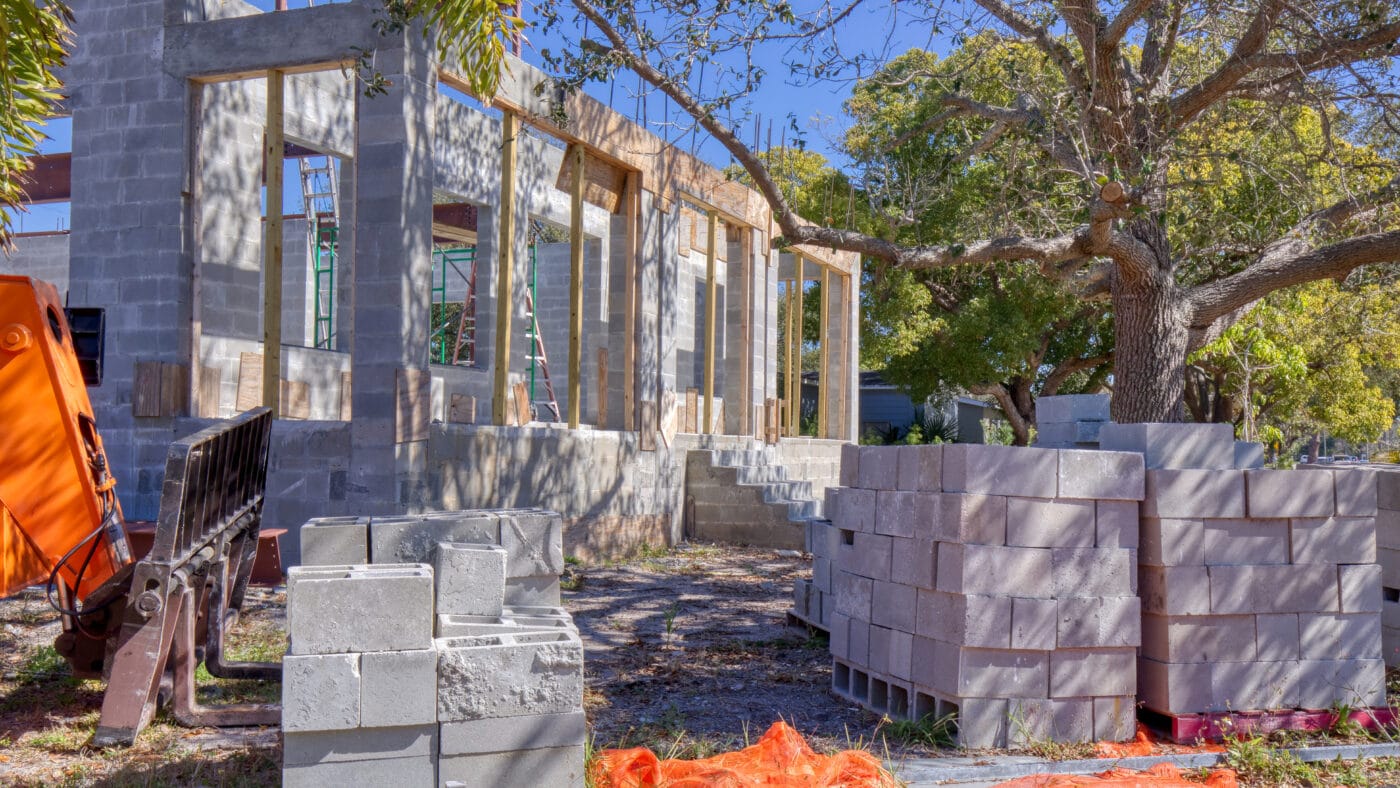When a builder chooses to cut corners; when a developer promises one thing and delivers another; when a contractor hires unskilled labor and fails to provide proper supervision, owners suffer consequences. How are these types of issues mitigated and what measures can either party take to avoid costly mistakes and potentially avoid litigation?
In this post, we focus on the Florida Construction Defect Statute 558 and review some quality control measures that can proactively help during construction to preserve the integrity of the building and its performance, as well as avoid certain loss. While we use Florida’s statute as context, a considerable amount of this insight can be applied to construction projects nationwide.
Chapter 558 of the Florida Statutes broadly governs “construction disputes.” The Statute generally requires that owners (i.e., associations) provide a pre-suit notice to developers, contractors, subcontractors, material suppliers and/or design professionals before the commencement of legal action against any of the parties in connection with an alleged construction defect. The notice must describe in “reasonable detail” the defect(s) so that the party in receipt of the notice may reasonably ascertain the location/scope of the defects. The notice must also list the damage or loss resulting from the defect(s), if known.
What is considered a Construction Defect?
The statute for Construction Defect Claims in Florida, in Chapter 558, applies to claims stemming from an assumed construction defect. Section 558.002(5), F.S., defines a “construction defect” as follows:
“[A] deficiency in, or a deficiency arising out of, the design, specifications, surveying, planning, supervision, observation of construction, or construction, repair, alteration, or remodeling of real property resulting from:
- (a) Defective material, products, or components used in the construction or remodeling;
- (b) A violation of the applicable codes in effect at the time of construction or remodeling which gives rise to a cause of action pursuant to s. 553.84;
- (c) A failure of the design of real property to meet the applicable professional standards of care at the time of governmental approval; or
- (d) A failure to construct or remodel real property in accordance with accepted trade standards for good and workmanlike construction at the time of construction.”
The preceding definition is broad and is likely to encompass most construction defect claims in Florida that stem from construction improvements or repairs to real property.
Notice requirements / deadlines under Florida Construction Defect Law
“Construction disputes” that fall within statute Ch. 558 have the following Notice of Claim requirements and deadlines:
When an owner believes it has encountered a construction defect, it initiates the Chapter 558 process by serving a letter (notice of claim in legal terms) upon the contractor. This notice will normally describe and locate each defect and any damage or loss associated with it.
Once the notice has been served, the parties have 60 days (unless the dispute involves a large condominium complex more than 20 parcels which has supplemental timeframes) to resolve the dispute. During this timeframe, a contractor has 30 days to inspect the defects and 10 days to serve copies of the notice upon all subcontractors that it believes to be responsible for the defects.
The contractor also has 45 days to serve a written response upon the owner that either denies the allegations or offers to remedy the defects through repair and/or payment. If the parties fail to reach an agreement on how to remedy the defects before the 60-day period expires, the owner may file a lawsuit.
During this process the contractor’s response may include:
- An offer to fix the defect at no cost to the owner with a detailed description of the required repairs and the time it will take to complete the fix;
- An offer to make a financial settlement;
- A combination offer to settle the claim with repairs and payment, with, again a description of the required repairs and a time estimate to complete the repairs;
- A statement disputing the construction defect claim and that they won’t try to fix the defect or settle the claim; or
- A statement saying any financial payment will be determined by their insurance company within 30 days after their insurer is notified of the claim.
The association has 45 days to respond to the contractor’s offer if the contractor submits an offer as outlined in the preceding paragraph. The association need not accept the contractor’s offer.
This foregoing timeline does not account for “downstream” subcontractors and suppliers. Section 558.004(3), F.S., permits a contractor who is in receipt of a 558 notice to “forward a copy of the notice of claim (within 10 days) to each contractor, subcontractor, supplier, or design professional whom it reasonably believes is responsible for each defect specified in the notice of claim and shall note the specific defect for which it believes the particular contractor, subcontractor, supplier, or design professional is responsible.”
Proactive quality control measures: an ounce of prevention
Lack of quality control is normally the root cause of construction defects during the lifecycle of the project. Quality control starts at the beginning of the project. To prevent certain pitfalls related to design and integration of systems, review contract documents carefully for errors and omissions and any need for clarification.
Be certain that project specifications are clear in terms of compliance for any integrated system and defining the processes for resolving quality issues. Establish a digital document control and maintenance system for items such as RFI responses, submittals, daily reports, inspection reports, etc. and continuously update these documents as well as distribute any changes to subcontractors so the project team is working with the same documents and updated changes.
Some best practices include the establishment and implementation of specific inspection protocols on a per-item component basis, including third-party inspections (if applicable). This is usually done by implementing an Inspection Test Plan (ITP) to make sure the proper quality control is in place for each activity in the construction process. Lastly, confirm that all contractual risk-shifting mechanisms are in place: warranty requirements, insurance, indemnification, bonds, etc.
During construction, initiate certain procedures for corrective actions upon discovery of defective work. Then, make certain to track the corrective work being performed and implement the procedures for post-remedial inspections. Moreover, establish a program to document conditions of any defect areas that were corrected – especially if these areas are going to be concealed. Finally, gather all close-out documents on an ongoing basis throughout the project.
How to reduce exposure to defect claims after construction
During the project closeout process, perform the following tasks to be proactive and mitigate exposure to construction defect claims after the work has wrapped up:
- Provide appropriate operations and maintenance manuals and instructions to the owner, operator and manager. This would also include training on systems and documentation of those who attended.
- Document conditions at the time of turn-over: video and photos, including the building operation training.
- Conduct post-completion inspections within the warranty period. Consider routinely inspecting certain components post-completion to determine how they are performing and to advise the owner of maintenance needs.
- Make sure to calendar and establish the statute of limitations against any subcontractor’s sureties.
- Manage and track the subcontractor insurance program (address sub insurance requirements for completed operations coverage through the statute of repose).
- Keep any testing and inspection records, along with owner and design professional sign offs for a minimum of 10 years. Electronic preservation is the most recommended avenue for these types of project documents.
Upcoming proposed changes to Florida Statute 558 and contractor warranties (SB 736, HB 583)
The current pre-suit process under Florida construction defect law, Chapter 558, is simple to comply with, but rarely results in a resolution. Instead, the outcome is generally a multi-party lawsuit involving every contractor, subcontractor, supplier, and design professional who set foot on the construction project. Such litigation is costly and time consuming, and generally difficult to advance given the significant number of parties, adjusters, attorneys, and experts who inevitably become involved.
The 2022 Florida legislature’s proposed changes to Statute 558 (SB 736 and HB 583) are designed to make the pre-suit process more effective and limit this type of litigation by requiring property owners to provide added transparency and fully vet claims before filing a suit. Other significant changes to the Florida statute 558 will now fall on the claimant. Under the proposed amendment, before sending a notice of claim, a property owner must first exhaust any applicable warranty claims.
This change is consistent with the statute’s goal of facilitating quick and cost-efficient resolutions. If there is warranty coverage for a particular component of work that is possibly defective, the property owner should pursue that avenue prior to expending time, money and judicial resources to resolve the issue.
When a notice of claim is received: Be a part of the Solution
Once a construction defect claim is presented against a contractor in Florida, during any testing and inspections taking place for investigative work, it is helpful for all parties involved to keep the following guidelines in mind. This can ensure productive onsite meetings as well as understanding the facts surrounding the basis of the defect claim:
- Don’t get discouraged or emotional. Be objective and focus on the facts.
- Understand the claims. Be familiar with the scopes of work that are implicated in the claim.
- Verify/evaluate each alleged defect.
- Before any meeting try to obtain files: drawings, specs, submittals, correspondence, consultants, etc. related to the claim. It is recommended to have these on hand during each site meeting and inspection.
- Arrive early for inspections and stay until the end. Schedule adequate time to observe inspections and document any destructive testing.
- Take detailed notes at every meeting, document locations observed, types of inspections performed, and take lots of photos.
- Obtain contact information from everyone present and cooperate with the process.
Handle construction claims with expertise
As mentioned previously, Florida construction defect law statute 558 is in place to facilitate a resolution to a dispute prior to going into any litigation. When successful, the Chapter 558 process can save all parties significant time and money. By cooperating with the process and avoiding the long, costly progression of litigation, the Chapter 558 statute can, in fact, be useful in helping to preserve a contractor’s relationships with owners and subcontractors.
To learn more about VERTEX’s Construction Claims Consulting and Expert Witness Services, or to speak with a Construction Expert, call 888.298.5162 or submit an inquiry.





